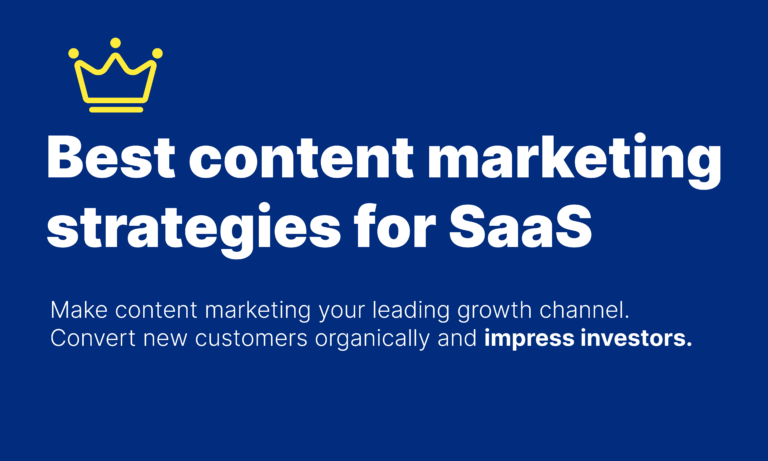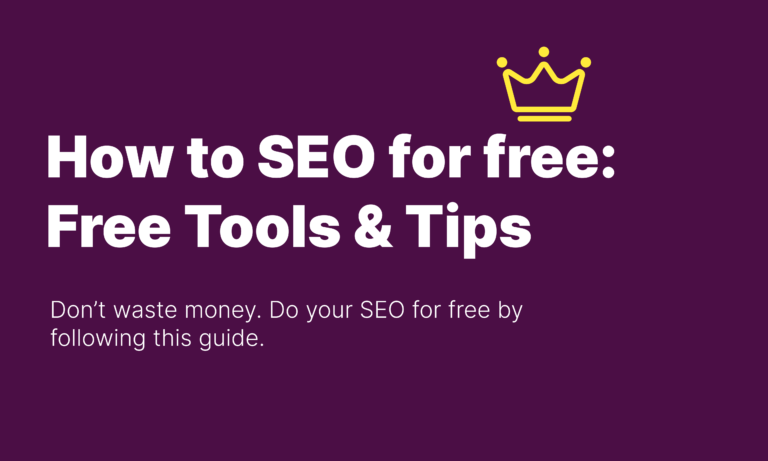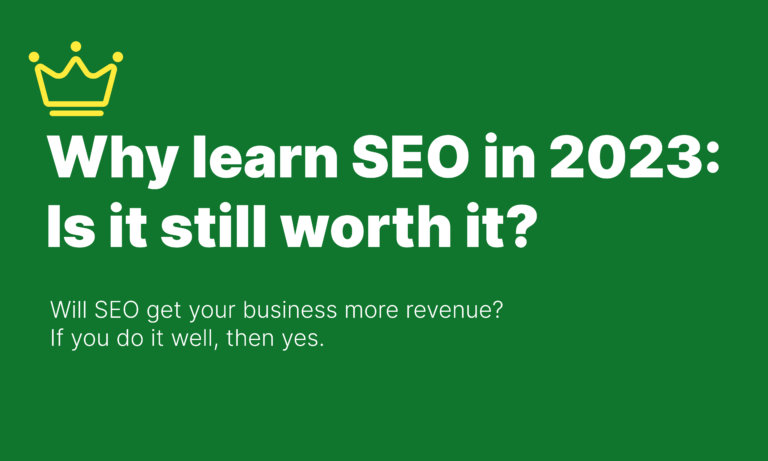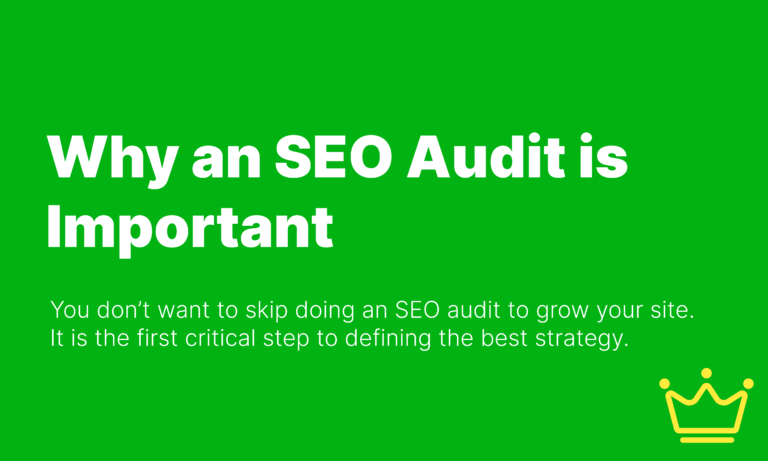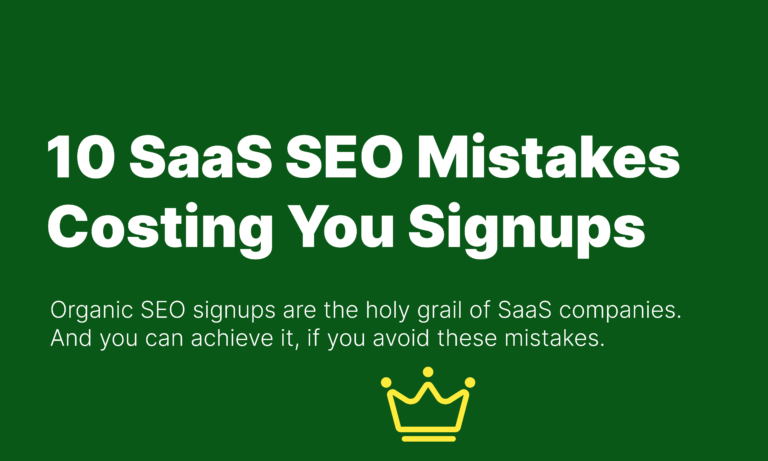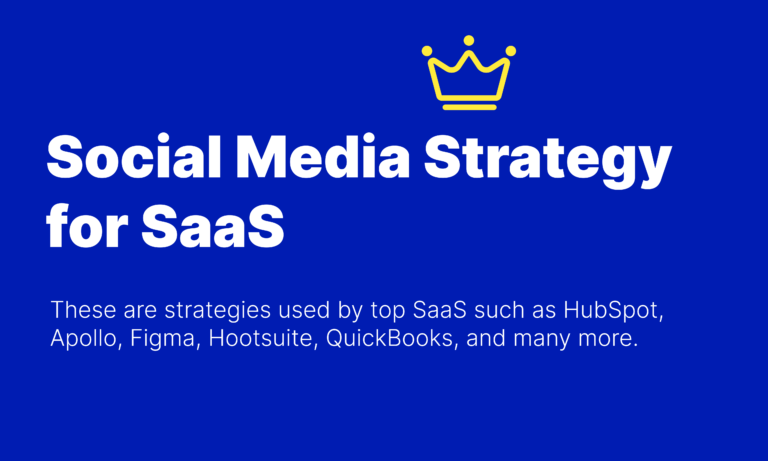SEO Tips for SaaS Companies
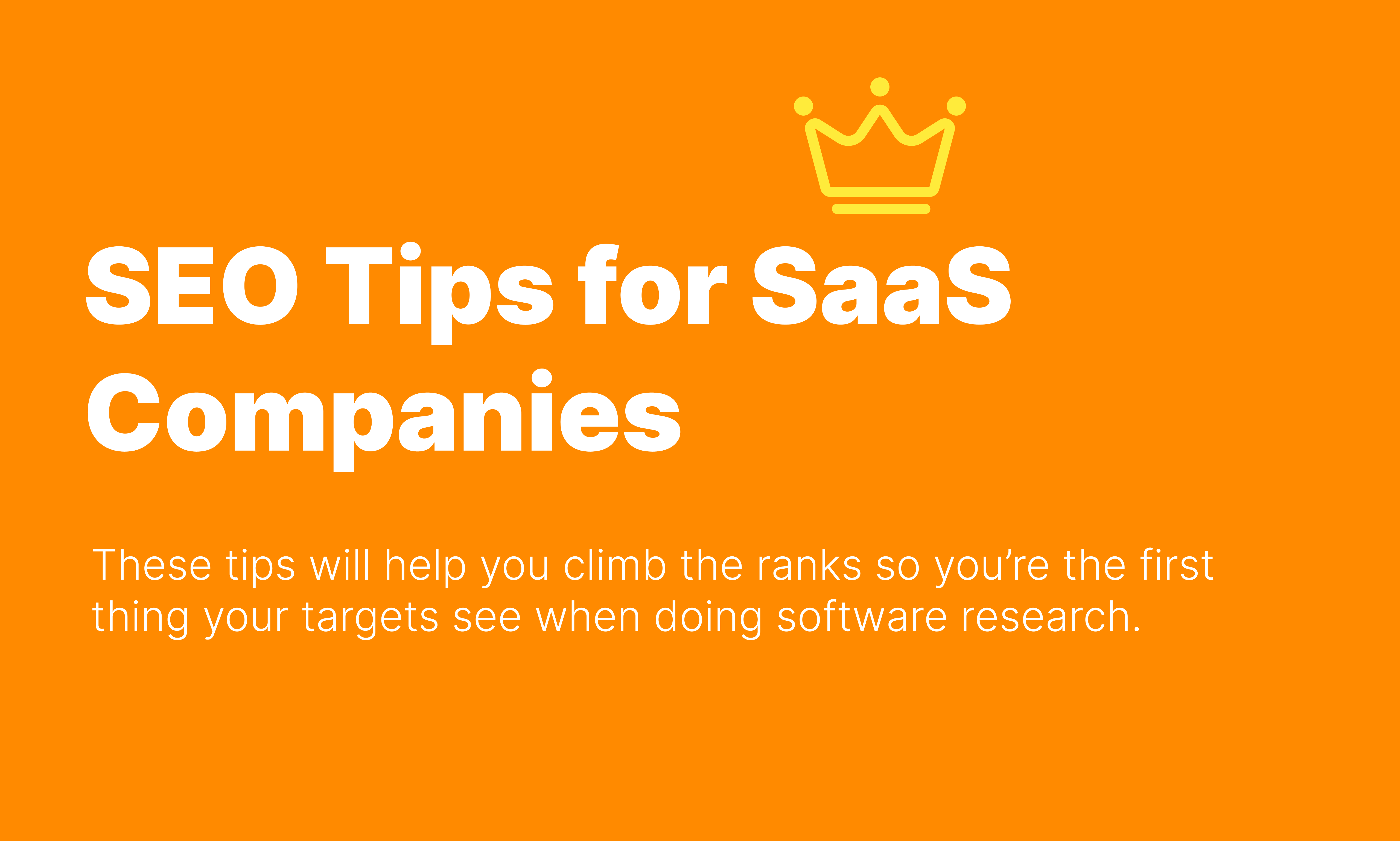
Google is still the main channel professionals use to make decisions about the software tools they purchase. And when they search for a SaaS solution like yours, they will most likely click on the first results. If your site is not among them, then you will lose the opportunity to engage with the thousands of people searching for your exact solution every day.
So let’s look at the things you can do to climb the ranks and be the first thing your targets see when doing software research. These are the best SEO tips for SaaS companies you can follow today.
1. Analyze Your Competitor Keywords
Your competitors are the best source of highly relevant keywords for your SaaS.
By peering into these keyword strategies of your rivals, you gain a profound understanding of the market nuances and customer preferences that shape your industry. Each keyword reflects a potential customer question, a problem to solve, or a need to fulfill. By deciphering these intents, you gain a powerful insight into your audience’s psyche, allowing you to tailor your content strategy and services precisely to what your customers are actively searching for. Use a tool like The Hoth to analyze your competitors.
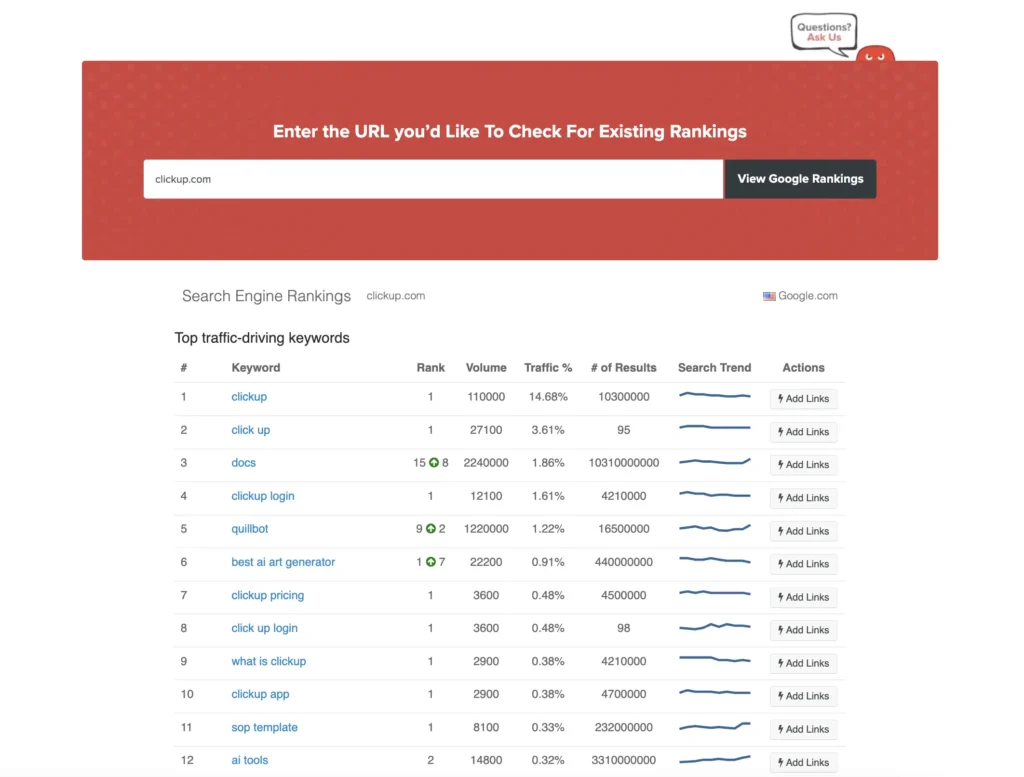
Armed with this knowledge, you can craft a laser-focused SEO (Search Engine Optimization) strategy that anticipates market demands and aligns perfectly with user intent. You can identify gaps in their content marketing, understand the type of content that resonates with your shared audience, and even foresee emerging trends.
The main idea is to look at the keywords they target and do a better job at doing so. This also includes looking at the competitors’ content and trying to write something better.
Recommended: Why SEO is Important for Digital Marketing
2. Make a Keyword List
A well-researched keyword list forms the foundation of your SEO strategy, dictating the topics you’ll cover, the questions you’ll answer, and the solutions you’ll provide. Use SEO tools like SEMRush or Ahrefs to do keyword research. There are 2 main types of keywords you need to look for. Short-tail keywords and long-tail keywords. Let’s take a look at both options with this article as an example. Short-tail keywords are general terms, for example, “SaaS SEO”. These keywords have a lot of traffic but also a lot of competition, so it’s difficult to rank them. On the other hand, long-tail keywords are more specific, for example, “SEO Tips for SaaS Companies”. These have less volume but also less competition.
As you grow your site, you need to start with long-tail keywords with little competition to start building authority. This is key for your early inbound marketing strategy success.
With your keyword list in hand, the next pivotal step lies in strategic prioritization. Some carry the potential to drive immense traffic to your website, while others offer targeted, niche engagement. Through meticulous analysis, categorize your keywords into tiers of importance. Identify high-priority keywords aligned with your core offerings and business objectives. Ideally, you want to do optimized content creation that targets all stages of the funnel, from awareness to conversion.
Once you have a well-researched list, you can know what terms to include in any landing page of your site as well as the topics you will write about in your blog. In addition, you can also use these keywords for PPC (Pay Per Click) campaigns. Well-thought paid search campaigns are a great compliment to an organic strategy and with the right keywords, your ROI can be great even as an early-stage startup.
3. Create Educational Blog Posts
Educational blog posts are the main tool for B2B SaaS companies to grow in Google. When creating SaaS content, address common pain points, answer frequently asked questions, and provide in-depth insights into industry trends. By offering valuable, actionable information, you empower your audience, positioning your SaaS brand as an indispensable resource. Educational posts are not merely about showcasing your expertise; they are about genuinely helping your audience navigate challenges, make informed decisions, and enhance their understanding of your products or services.
Utilize a variety of formats, from how-to guides and tutorials to case studies and industry insights. Ensure you write about a diverse range of educational content that appeals to different learning preferences. Infuse your posts with engaging visuals, real-life examples, and practical tips, transforming complex concepts into easily digestible knowledge.

We can do your content marketing
Uphill Content specializes in growing SaaS businesses, from early-stage to exit. Send us a message to learn how we can help.
4. Build Content Pillars
Another main SEO tip for SaaS companies that we recommend is to create content pillars. Basically what this means is that you need to create multiple short to medium-sized blog posts focusing on specific topics within a general subject. Then, you create a pillar page. This is a long article that covers everything about the general subject. Then, you link all the small articles to each other and to the pillar page.
This interlinking not only enriches user experience but also boosts your SEO efforts, as search engines recognize the depth and breadth of your content. As your content pillars gain visibility and authority, they become magnets for organic search traffic, drawing in curious minds seeking expertise. If one does well in search engine results, it will push the others up as well.
One of the inherent advantages of great content pillars lies in their interconnected nature. Through strategic interlinking, you create a seamless web of knowledge within your website. Readers can navigate effortlessly between related topics, enhancing their learning experience and encouraging prolonged engagement.
Recommended: Why Learn SEO in 2023: Is It Still Worth It?
5. Build Links From Other SaaS Websites
By doing link building, you tap into new audiences, expanding your reach and enhancing your online visibility. But not only that. These links are also a key ranking factor. When reputable SaaS websites link to your content, it acts as a vote of confidence in the eyes of Google, elevating your authority and trustworthiness. This means that your rankings improve.
Building backlinks from other SaaS websites requires strategic outreach and relationship building. For this purpose, it’s better not to use spammy tactics because Google can realize and flag your site. What really matters for Google is that the sites that link to you have good authority. Too many links from low-authority sites can even be bad for your authority.
Identify key players within your industry, seeking out those whose expertise aligns with your offerings. Reach out to them with personalized, compelling pitches, showcasing the mutual benefits of collaboration. Offer to create guest posts, collaborate on joint webinars, or contribute valuable insights to their platforms. These collaborations not only result in valuable backlinks but also foster a sense of community within your industry.
6. Improve Your Site Speed
Enhanced user experience translates into lower bounce rates, higher engagement, and increased conversion rates. This is a green flag for Google. The search engine wants its users to find the best result, and a slow site without optimization isn’t.
Websites that load quickly are favored in search results, leading to improved visibility and, consequently, higher organic traffic. By optimizing your site speed, you not only cater to the evolving demands of your users but also bolster your SEO efforts, enhancing your SaaS company’s online presence.
Improving site speed involves a combination of technical enhancements and best practices. Utilize free tools like Google’s PageSpeed Insights to conduct comprehensive audits, identifying elements that hinder your website’s loading speed. Compress images, minimize server requests, and leverage browser caching to streamline the loading process.

Get a free SEO audit
Enter your business email below to get a free SEO audit with actionable insights to improve your site.
7. Diversify Traffic Channels
Google wants to recommend sites that people are interested in. A website with a bunch of content but no visitors isn’t great for Google because of that. So to improve your rankings, you need to demonstrate to the search engine that people actually want to see your content specifically. And the only way to do that is through other channels.
Social media platforms, such as Facebook, Twitter, and LinkedIn, enable you to connect with a vast audience, share compelling content, and foster meaningful interactions. By leveraging targeted social media campaigns, you can reach your target audience, driving website traffic from users interested in your SaaS offerings. Additionally, email marketing remains a powerful tool for nurturing leads and engaging existing customers. Thoughtfully crafted newsletters, product updates, and exclusive offers can entice recipients to visit your website, generating traffic and reinforcing brand loyalty. Paid advertising, including Google Ads and social media ads, allows you to strategically target potential customers based on their interests and behaviors.
Plus, by investing in well-targeted ad campaigns, you can attract high-intent visitors, driving them to explore your website and potentially convert into customers.
Final SEO Tip for SaaS Companies
Any digital marketing channel needs consistency to grow. And SEO is not the exception. So the final SEO tip for your SaaS, and probably the most important one is to stay consistent. Few long-form articles won’t do much for you. You need to consistently create a lot of high-quality content, build links, improve site speed, do keyword research, and drive traffic from other platforms if you want significant growth.
If you follow the tips in this guide, your B2B SaaS will have the best chance at growing in search engines, so start today!
